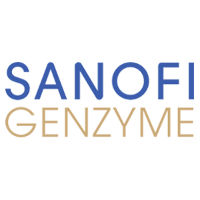预约演示
更新于:2025-05-07
EGFR x VEGFR
更新于:2025-05-07
关联
31
项与 EGFR x VEGFR 相关的药物作用机制 BRK抑制剂 [+6] |
在研机构 |
原研机构 |
在研适应症 |
最高研发阶段批准上市 |
首次获批国家/地区 美国 |
首次获批日期2011-04-06 |
作用机制 EGFR拮抗剂 [+2] |
在研适应症 |
最高研发阶段临床2期 |
首次获批国家/地区- |
首次获批日期1800-01-20 |
作用机制 CD19抑制剂 [+3] |
非在研适应症- |
最高研发阶段临床1期 |
首次获批国家/地区- |
首次获批日期1800-01-20 |
161
项与 EGFR x VEGFR 相关的临床试验NCT05704985
Dose-finding Phase 1 Trial: Evaluating Safety and Biomarkers Using DK210 (EGFR) for Inoperable Locally Advanced and/or Metastatic EGFR+ Tumors With Progressive Disease Failing Systemic Therapy
This study will evaluate safety, pharmacodynamics and biomarkers of subcutaneous (SC) DK210(EGFR) given as monotherapy and in combination with immunotherapy, chemotherapy or radiation.
开始日期2023-04-03 |
申办/合作机构 |
CTR20212821
HA121-28片治疗RET融合阳性晚期非小细胞肺癌的单臂、多中心、开放性 II 期临床研究
主要研究目的:
评估HA121-28片在RET融合阳性晚期非小细胞肺癌(NSCLC)患者中的疗效。
次要研究目的:
评估HA121-28片在RET融合阳性晚期NSCLC患者中的安全性。
开始日期2022-03-10 |
申办/合作机构 |
NCT05117658
A Single-Arm, Multi-Centre, Open-Label Phase II Study of HA121-28 in Patients With RET Fusion-Positive Advanced Non-Small Cell Lung Cancer
This study is a multicenter, open-label, single-arm phase II study to evaluate efficacy and safety of HA121-28 tablets in patients with rearranged during transfection (RET) fusion-positive advanced non-small cell lung cancer (NSCLC).
开始日期2022-02-18 |
申办/合作机构 |
100 项与 EGFR x VEGFR 相关的临床结果
登录后查看更多信息
100 项与 EGFR x VEGFR 相关的转化医学
登录后查看更多信息
0 项与 EGFR x VEGFR 相关的专利(医药)
登录后查看更多信息
1,477
项与 EGFR x VEGFR 相关的文献(医药)2025-12-01·Molecular Biology Reports
Advances on the therapeutic potential of cell receptor activation in glioblastoma
Review
作者: Contreras, Irazú ; Estrada, José A ; Zapi-Colin, Luis A ; Contreras-Chávez, Gerson G
2025-06-01·Bioorganic Chemistry
New pyrrolo[3,4-d] isoxazolidines hybrid with furan as antitumor agents and multi-target enzyme inhibitors: Synthesis and in silico study
Article
作者: El-Rashedy, Ahmed A ; Hamdi, Abdelrahman ; Ahmed, Mostafa ; Said, Awad I ; Ewes, Wafaa A
2025-05-24·Journal of Biomolecular Structure and Dynamics
Design, spectroscopic characterization,
in silico
and
in vitro
cytotoxic activity assessment of newly synthesized thymol Schiff base derivatives
Review
作者: Başaran, Eyüp ; Sahin, Dicle ; Akkoc, Senem ; Çakmak, Reşit ; Türkmenoğlu, Burçin ; Köprü, Semiha
488
项与 EGFR x VEGFR 相关的新闻(医药)2025-05-04
·药事纵横
声明:因水平有限,错误不可避免,或有些信息非最及时,欢迎留言指出。本文仅作医疗健康相关药物介绍,非治疗方案推荐(若涉及);本文不构成任何投资建议。NMPA发布2025年04月25日药品批准证明文件送达信息,本批次共有104个受理号获批,多款重磅新药新适应症获准上市,其中:奥赛康药业的利厄替尼片新适应症获批上市,用于具有表皮生长因子受体(EGFR)外显子 19 缺失(19DEL)或外显子 21置换突变(L858R)的局部晚期或转移性非小细胞肺癌(NSCLC)成人患者的一线治疗。利厄替尼是一款口服的第三代 EGFR-TKI,于 2025 年 1 月首次在国内获批上市,用于既往经 EGFR TKI 治疗时或治疗后出现疾病进展,并且经检测确认存在 EGFR T790M突变阳性的局部晚期或转移性 NSCLC 成人患者的治疗。2024 年 9 月 30 日,奥赛康与信达就利厄替尼达成独家商业化合作。信达取得合作产品在中国大陆地区的独家推广销售权,将按合作协议约定向奥赛康支付首付款、注册里程碑和销售里程碑款项。诺诚健华的奥布替尼片新适应症获批上市,一线治疗慢性淋巴细胞白血病(CLL)/小淋巴细胞淋巴瘤 (SLL)。奥布替尼是诺诚健华研发的一款不可逆布鲁顿酪氨酸激酶(BTK)抑制剂,可用于治疗淋巴瘤及自身免疫性疾病。2020年12月,奥布替尼在中国获批用于治疗复发/难治慢性淋巴细胞白血病(CLL)/小淋巴细胞淋巴瘤(SLL)、以及复发/难治性套细胞淋巴瘤(MCL)两项适应症。2023年4月,奥布替尼获批用于既往至少接受过一次治疗的边缘区淋巴瘤(MZL)患者。康方生物的依沃西单抗注射液新适应症获批上市,单药用于 PD-L1 表达阳性(PD-L1 TPS≥1%)的局部晚期或转移性非小细胞肺癌(NSCLC)的一线治疗依沃西单抗是一款 PD-1/VEGF 双特异性抗体,2024 年 5 月,依沃西单抗首次获批上市,适应症为联合培美曲塞和卡铂用于经 EGFR-TKI 治疗后进展的 EGFR 基因突变阳性的局部晚期或转移性非鳞状 NSCLC 患者的二线治疗。君实生物的特瑞普利单抗注射液新适应症获批上市,用于不可切除或转移性黑色素瘤一线治疗。特瑞普利单抗作为我国批准上市的首个国产 PD-1 单抗,已在国内获批 12 项适应症,包括黑色素瘤、鼻咽癌、尿路上皮癌/膀胱癌、食管鳞癌、非鳞状非小细胞肺癌、非小细胞肺癌、肾细胞癌、小细胞肺癌、三阴性乳腺癌、肝癌等适应症。锐康迪医药(Recordati集团中国全资子公司)申报的注射用双羟萘酸帕瑞肽微球获批上市,用于治疗无法手术或手术后未治愈和通过另一种生长抑素类似物治疗控制不佳的成人肢端肥大症患者。双羟萘酸帕瑞肽为第二代生长抑素类似物(SRL),生长抑素正是GH分泌的生理抑制剂。此前,双羟萘酸帕瑞肽已获得欧洲药品管理局(EMA)和美国FDA批准治疗成人肢端肥大症患者。辉瑞的阿昔替尼片新适应症获批上市,具体适应症尚未披露。公开资料显示,阿昔替尼是一种口服的,作用于血管内皮生长因子受体1,2和3的强效和高选择性酪氨酸激酶抑制剂,通过抑制血管内皮生长因子受体信号系统,全面阻止肿瘤进展。该产品最初于2012年获美国FDA批准上市,于2015年在中国获批,首个适应症为治疗既往接受过一种酪氨酸激酶抑制剂或细胞因子治疗失败的进展期肾细胞癌(RCC)的成人患者。阿斯利康的马来酸阿可替尼片新适应症获批上市,具体适应症尚未披露。阿可替尼是阿斯利康自主研发的第二代选择性BTK抑制剂。2024年11月,阿可替尼片剂剂型首次在中国获批,用于治疗既往至少接受过一种治疗的成人套细胞淋巴瘤(MCL)患者。强生的埃万妥单抗注射液新适应症获批上市,与卡铂和培美曲塞联合给药,适用于治疗携带表皮生长因子受体(EGFR)19号外显子缺失或21号外显子L858R置换突变且在EGFR酪氨酸激酶抑制剂治疗期间或之后疾病进展的局部晚期或转移性非鳞状非小细胞肺癌(NSCLC)成人患者。埃万妥单抗是一款全人源双特异性抗体,同时针对EGFR和MET两个靶点。这是埃万妥单抗今年在中国获批的第二个肺癌适应症,此前,埃万妥单抗已于今年2月获批用于治疗携带EGFR 20号外显子插入突变的局部晚期或转移性非小细胞肺癌成人患者的一线治疗。完整批件信息如下:
上市批准引进/卖出
2025-05-04
往期推荐产品动态依沃西一线治疗NSCLC获批上市(全球首个对比帕博利珠单抗获显著阳性结果的III期研究)产品动态美国重磅上市!派安普利单抗2个适应症获FDA批准上市,用于晚期鼻咽癌治疗产品动态康方生物爱达罗®(依若奇,IL-12/IL-23)治疗中重度斑块状银屑病适应症获批上市临床进展首个自研ADC澳洲临床入组!康方生物IO 2.0+ADC战略再进一步临床进展非肿瘤首个双抗|康方生物全球首创IL-4Rα/ST2(AK139)IND获受理,剑指呼吸系统及皮肤疾病领域临床进展依沃西方案对比替雷利珠方案1L治疗sq-NSCLC的Ⅲ期临床完成患者入组临床进展康方生物古莫奇(IL-17)单抗新药上市申请获NMPA受理数据发布荣登Nature Medicine!卡度尼利方案1L治疗胃癌Ⅲ期研究结果全文发表产品动态康方生物卡度尼利、依沃西纳入2024年国家医保目录临床进展头对头度伐利尤单抗方案,依沃西方案一线治疗胆道肿瘤III期临床完成首例患者入组临床进展全球首个CD47单抗实体瘤III期临床首例入组:依沃西联合莱法利一线治疗HNSCC(对比帕博利珠单抗)数据发布卡度尼利一线宫颈癌III期研究成果荣登《Nature Reviews Clinical Oncology》(影响因子高81.1)数据发布IGCS 2024 LBA & 《柳叶刀》主刊,卡度尼利1L宫颈癌III期研究PFS和OS双阳性结果重磅发布产品动态一线胃癌全人群获批!康方生物卡度尼利获批第二个适应症产品动态获FDA快速通道资格!依沃西国际多中心III期研究HARMONi完成入组,2L+EGFRm NSCLC数据发布全球首个对比帕博利珠单抗取得显著阳性结果的随机对照大III期研究——依沃西HARMONi-2重磅研究成果在WCLC发表临床进展康方生物卡度尼利联合方案治疗uHCC的III期临床研究完成首例患者入组临床进展针对PD-1/L1治疗进展晚期胃癌,卡度尼利+普络西(VEGFR-2)联合疗法Ⅲ期临床完成首例入组数据发布ASCO Oral & JAMA主刊丨Ⅲ期HARMONi-A研究重磅公布,依沃西疗法有望改变EGFR-TKI进展肺癌全球治疗标准临床进展史无前例!康方依沃西单药对比帕博利珠1L治疗PD-L1阳性NSCLC的III期临床获决定性胜出阳性结果产品动态康方生物双抗卡度尼利一线治疗晚期宫颈癌全人群的sNDA获CDE受理临床进展国际多中心注册性III期研究HARMONi-3中国启动:依沃西单抗联合化疗对比帕博利珠单抗联合化疗1L治疗sq-NSCLC产品动态高达50亿美金!康方生物与Summit就PD-1/VEGF双抗依沃西达成合作和许可协议产品动态全球首个肿瘤免疫治疗双抗——开坦尼®(PD-1/CTLA-4双抗,卡度尼利)获批上市
临床3期ASCO会议抗体药物偶联物上市批准临床结果
2025-04-30
·抗体圈
4月28日,迪哲医药交出国内2024年及2025Q1靓丽的成绩单,公司2024年实现营收3.6亿元,同比增长294%。2025Q1,迪哲医药用强劲的医保放量业绩奠定了全年商业化爆发的基础,公司实现收入1.6亿元,同比增长96%。 迪哲医药盈利能力的增强,不仅得益于产品商业化的强势增长,还得益于公司控费增效的正向反馈,公司2025Q1销售费用率实现77%,对比2024年全年的124%呈现显著下降。接连推出两款源头创新药物的前提下,研发费用在过去两年持平,略微下降。归母净亏损持续缩窄,2024年同比降24%,25年Q1同比再降14%。如此正向的经营趋势,迪哲医药有望在今年进入快速放量阶段,进一步大幅减亏。今年4月,公司作为“科八条”后唯一完成定增发行的未盈利上市公司,已完成向特定对象发行股票募集资金18亿元,加速公司在肺癌、血液瘤两大领域创新管线研发和全产业链布局。2025年,将是迪哲医药的起爆之年。01两大产品商业化天花板全面打开迪哲医药的营收均来自舒沃替尼和戈利昔替尼的销售收入,过硬的商业化能力,是公司交出优异成绩的核心推进器。两款产品上市后商业化推进持续超预期,连刷非自有工厂首方落地速度行业纪录、上市后医保首个年度双双实现纳入。此前,舒沃替尼上市10个月在自费市场情况下,每个季度环比高增长,实现了近3亿元销售。以适应症人数相当的治疗MET外显子14跳变NSCLC赛沃替尼、RET突变NSCLC普拉替尼为参照,赛沃替尼由AZ负责国内推广,上市首个完整年销售额为3亿元、罗氏的普拉替尼全球上市首个完整年为1.97亿元,足见迪哲医药的商业化团队实力可媲美MNC。事实上,两款产品的市场潜力才刚刚开始释放。舒沃替尼是目前国内唯一获批治疗EGFR exon20ins突变非小细胞肺癌(NSCLC)的医保报销药物;同时,针对≥2L EGFR exon20ins NSCLC获CSCO等各大权威指南最高等级推荐,国内&国际多中心注册研究双重验证的同类最佳(BIC)潜力毋庸置疑。市场独占性极高,新进入竞品很难打入市场。仅凭二线适应症在国内商业化上便初露峥嵘,等未来一线适应症的BIC潜力兑现,舒沃替尼放量速度将呈现质变提升。同时,舒沃替尼适应症扩围含金量还在提升,2025 欧洲肺癌大会(ELCC) 其联合VEGFR治疗EGFR-TKI耐药NSCLC二期临床的疾病控制率(DCR)高达100%,其它适应证拓展研究也在积极推进。戈利昔替尼作为针对外周T细胞淋巴瘤(PTCL)全球首创(FIC)机制和BIC疗效的高选择性JAK1抑制剂,有望成为横跨血液瘤、实体瘤和自免疾病的重磅炸弹。在首发适应症上,其不仅成为该领域全球过去10年里首个获批的创新药,还是目前单药治疗复发/难治(r/r) PTCL中位生存期(mOS)最长的药物,今年4月获《CSCO淋巴瘤诊疗指南(2025版)》纳入I级推荐。该指南还首次推荐戈利昔替尼单药治疗复发/难治NK/T细胞淋巴瘤(r/r NKTCL)患者,并提及其针对PTCL维持治疗的探索。除了PTCL适应症外,Science发现JAK抑制剂联合IO治疗,可实现逆转T细胞耗竭并增强PD-1抑制剂治疗肺癌的效果,戈利昔替尼联合PD-1抑制剂治疗PD-1耐药晚期NSCLC的研究正处于二期临床。随着PD-1的广泛治疗覆盖,PD-1耐药晚期NSCLC市场正快速增长,戈利昔替尼有望成为该大市场中PD-1的最佳搭档之一。值得注意的是,JAK家族抑制剂在自免领域诞生了乌帕替尼、芦可替尼等重磅炸弹,戈利昔替尼作为选择性、安全性凸显的JAK1抑制剂,其未来在自免领域的潜力不可估量。不难看出,迪哲医药的两款产品才刚刚进入高速增长期,还远没有到天花板,而公司2025Q1业绩是两款产品真正爆发力和市场潜力的开端。02国际化大市场待驰骋国内进入医保商业化元年之外,市场最大期待莫过于迪哲医药打开国际化局面。目前,针对≥2L EGFR exon20ins NSCLC,舒沃替尼已获FDA优先审评并临近批准节点,一旦获批将打开公司的全球化成长空间和市值空间。 在埃万妥单抗在美完全获批的背景下,舒沃替尼依然拿到美国FDA的优先审评,其临床价值不言而喻。同时,舒沃替尼一线治疗EGFR Exon20ins NSCLC的全球III期注册临床正在加速推进,有望颠覆领域治疗格局。(图源:2023 ESMO)舒沃替尼单药治疗模式优势显现:1)即便入组患者年纪更大、脑转移患者比例更高,舒沃替尼仍交出潜在更优疗效;2)舒沃替尼潜在安全性更佳:埃万妥单抗联合化疗的严重不良事件发生率约为37%,因AEs导致治疗减量、终止的患者比例均显著高于舒沃替尼;3)埃万妥单抗联合治疗方案,前4周每周静脉输注,后续每3周1次,需反复住院治疗;舒沃替尼采取口服给药,更便利,医患依从性更高。新英格兰杂志一篇针对EGFR突变NSCLC的调研结果显示,≥73%医生和患者更倾向单药治疗,一线即使联合治疗模式有显著的PFS获益,医患对其接受度仍明显低于单药治疗模式,这彰显了舒沃替尼在未来一线治疗市场的强竞争力。目前,舒沃替尼处于一个关键的爆发窗口,海外FDA批准极大可能在今年落地,无论最终落地商业化模式如何,仅海外上市里程碑一经兑现,便可打出王炸的威力。从迪哲医药享有自家管线全球权益、独立推进海外临床到NDA阶段,足以证明公司在尽可能的“榨取”自家BIC分子的最大价值。03占位肺癌、血液癌领域大玩家相信市场不难看出,迪哲医药将舒沃替尼、戈利昔替尼作为Backbone或者先锋的角色,以差异化适应症优势来实现肺癌、血液瘤领域的快速占位。这样的好处在于公司可快速构建起专科商业化团队,而更大的图谋在于公司未来将通过适应证拓展或联合治疗,及新管线,不断延展、做深做透,打造肺癌&血液瘤全球竞争优势。(图源:迪哲医药2024年报)过去EGFR、JAK家族抑制剂在肺癌、血液瘤领域均有药物获得商业化验证。在舒沃替尼、戈利昔替尼全力奔向国际化之时,迪哲医药拥有更大潜力的早中期研发梯队正在展现光芒。其中,DZD8586和DZD6008最新研究结果入选2025 ASCO,前者针对慢性淋巴细胞白血病/小淋巴细胞淋巴瘤(CLL/SLL)的数据获口头报告,这也是迪哲医药连续第三年斩获ASCO口头报告。DZD8586是一款非共价、可完全穿透血脑屏障的LYN/BTK双靶点抑制剂,也是一款全球首创药物。B细胞非霍奇金淋巴瘤(B-NHL)是血液瘤最大的适应症之一,但其是一种极易治疗后复发的恶性肿瘤。DZD8586可完全阻断BTK依赖性和非依赖性BCR信号通路,早期临床在多种B-NHL亚型中均观察到显著的肿瘤缓解,有望解决现有已上市BTK抑制剂存在的耐药性难题。此前一项发表于ASH大会的研究显示,在接受DZD8586治疗后, 94.4%的CLL/SLL患者出现肿瘤缩小。目前,尽管BTK降解剂针对CLL/SLL在早期临床中展现出令人鼓舞的疗效,但已有突变相关耐药报道,且其毒副作用可能影响临床的长期应用。本次DZD8586针对既往接受过BTK抑制剂和BTK降解剂治疗CLL/SLL的ASCO口头报告,非常值得期待。DZD8586表露了公司聚焦解决现有BTK和Bcl-2等靶点存在的耐药问题,以求捕获下一代血液瘤重磅炸弹的决心。DZD6008是一款新一代 的EGFR-TKI,其区别于传统的ATP竞争型EGFR-TKI,不仅能够解决第三代EGFR-TKI存在的C797S突变、MET扩增等新耐药突变的问题,同时还能减少对野生型EGFR的抑制并降低副作用。另外,脑转移一直是导致EGFR突变NSCLC患者疾病进展及患者死亡的主要原因之一,23%-30%患者在初次诊断时即存在脑转移,DZD6008在三代EGFR TKI和多线治疗失败及脑转移的病人中显示优异的安全性和有效性。DZD6008意味着迪哲医药避开第三代EGFR抑制剂内卷,聚焦下一代更强的、临床价值更大的肺癌大适应症。从DZD6008、DZD8586两大早研分子的设计策略看,迪哲医药遵循“FIC/BIC研发”、“进军大适应症”、“针对全球未满足临床需求迭代治疗标准”等方针。该策略方针大有艾伯维当年通过爆款FIC药物单药和联合疗法来奠定“血液瘤”霸主地位的风范。结语:舒沃替尼、戈利昔替尼两大产品步入商业化高速成长期,舒沃替尼的大概率出海商业化,预示着公司国际化2.0时代大门正在缓慢打开,不断冲击公司的成长天花板。而DZD6008、DZD8586等新一代FIC/BIC早研分子的兑现和纵深的管线布局,已为迪哲医药奔向Biopharma,勾勒出所在领域全球领航者的未来。识别微信二维码,添加抗体圈小编,符合条件者即可加入抗体圈微信群!请注明:姓名+研究方向!本公众号所有转载文章系出于传递更多信息之目的,且明确注明来源和作者,不希望被转载的媒体或个人可与我们联系(cbplib@163.com),我们将立即进行删除处理。所有文章仅代表作者观点,不代表本站立场。
CSCO会议财报临床2期
分析
对领域进行一次全面的分析。
登录
或

生物医药百科问答
全新生物医药AI Agent 覆盖科研全链路,让突破性发现快人一步
立即开始免费试用!
智慧芽新药情报库是智慧芽专为生命科学人士构建的基于AI的创新药情报平台,助您全方位提升您的研发与决策效率。
立即开始数据试用!
智慧芽新药库数据也通过智慧芽数据服务平台,以API或者数据包形式对外开放,助您更加充分利用智慧芽新药情报信息。
生物序列数据库
生物药研发创新
免费使用
化学结构数据库
小分子化药研发创新
免费使用



